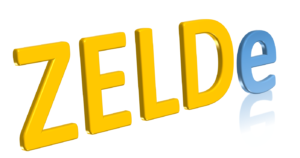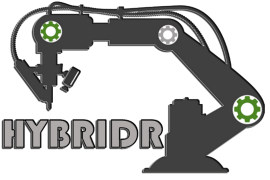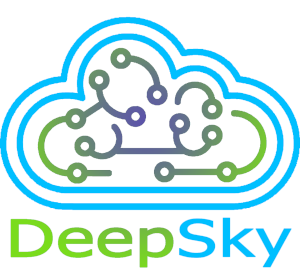R&D Projects
R&D Projects
![]()
Projects currently in progress:
“NeurAdapt”, has indirectly received funding from the European Union’s Horizon 2020 research and innovation action programme, via the AI4Media Open Call #1 issued and executed under the AI4Media project (Grant Agreement no. 951911). Learn more at ai4media.eu
Description: The goal of NeurAdapt project is to explore a new path in the design of deep Convolutional Neural Networks (CNNs), which could enable a new family of more efficient and adaptive models for any application that rely on the predictive capabilities of deep learning. Inspired by recent advances in the field of biological Interneurons that highlight the importance of inhibition and random connectivity to the encoding efficiency of neuronal circuits, we aim to investigate the mechanisms that could impart similar qualities to artificial CNNs.
Established techniques such as Channel Gating, Channel Attention and calibrated dropout, each proposed independently and with different objectives, can offer tools to formulate a novel building block for CNN models that expands the functional diversity of the standard convolutional layer. By formulating a differentiable convolutional operator with additional mechanisms for competitive inhibition/excitation and stochastic activation with tunable probability, we pursue the hypothesis that the optimization of the learning tasks will drive the model to create modes that are information-rich, in a process like the one observed in biological neural networks.
Furthermore, the stochastic nature of neuronal activity if appropriately modelled and augmented with sparsity-inducing mechanisms, has the potential to enable the training of models with parametrized levels of sparsity, offering the capacity to control inference/complexity tradeoff on-the-fly, without any need for additional finetuning. Achieving a functionality like this can impart new capabilities to information processing systems which are based on CNNs. Inference with adjustable level of thoroughness/speed can enable applications such as rapid content search in large media databases, energy-aware decision-making etc.
The main outcome of the proposed project will be a new methodology for designing efficient deep CNN architectures regardless of the specific task and target domain. Furthermore, NeurAdapt aims to create new knowledge regarding the dynamic behavior of the excitation-inhibition mechanisms in feed-forward DNNs, their capabilities for further development and the respective limitations.
“Zero-defect wELDing for e-mobility”, funded under EIT Manufacturing, grant agreements no. 21122 (year-2021) and no. 22204 (year-2022). Learn more at zeld-e.eu
Description: ZELD-e aims to reconfigure and update the existing monitoring and control schema of the welding processes involved in tab-to-tab (T2T) and tab-to-busbar (T2B) joining of battery packs (BP) used in EVs, in order to increase the joint quality, reduce and even eliminate defective parts, optimize equipment’s productivity, energy consumption and minimize development time and time-to-market. The proposed solution/system is based upon a multilevel approach, including the enhancement of the sensorial configurations, the data acquisition (DAQ), and control functionalities located at the edge (shop floor), backed up by a centralized web-based platform with visualization, Quality Assessment (QA) and data processing/analysis capabilities paired with a long-term control optimization schema.
Our Role: Vision-based monitoring and control schema for QA of laser welding processes in battery packs.

“Artificial Intelligence Applied to Space”, funded under H2020, grant agreement no. 776262. Learn more at aida-space.eu/
Description: AIDA brings a transformational innovation to the analysis of heliophysics data in four steps.
First, AIDA will develop a new open source software called AIDApy written in Python (a free language) and capable of collecting, combining and correlating data from different space missions. AIDApy wants to replace mission-specific tools written for costly languages (such as IDL) that exclude many scientists, students and amateur space enthusiasts from exploring the data, with a much-needed single platform where methods are shared and continuously improved by the whole community.
Second, AIDA will introduce modern data assimilation, statistical methods and machine learning (ML) to heliophysics data processing. Unlike traditional methods based on human expertise, these methods rely on statistics and information theory to extract features that are hidden in the data.
Third, AIDA will combine real data from space missions with synthetic data from simulations developing a virtual satellite component for AIDApy. This feature will be demonstrated in the comparison with existing mission data and in the planning of new missions (e.g. ESA’s THOR).
Fourth, AIDA will deploy in AIDApy methods of Artificial Intelligence (AI) to analyse data flows from heliophysics missions.
This task requires bridging together competences in computer science and in heliophysics and pushes well beyond the current state of the art in space data analysis, connecting space researchers with AI, one of the fastest growing trends in modern science and industrial development.
AIDA will use the new AIDApy in selecting key heliophysics problems to produce a database (AIDAdb) of new high-level data products that include catalogs of features and events detected by ML and AI algorithms. Moreover, many of the AI methods developed in AIDA will themselves represent higher-level data products, for instance in the form of trained neural networks that can be stored and reused as a database of coefficients.
Our Role: Development of Python-based AI framework (incl. AI model optimizations) for analysing data flows in space weather data.
“A Hybrid (Additive and Subtractive) Processing Robotic system”, co-financed by the EU and National funds through the Operational Program Competitiveness, Entrepreneurship and Innovation, under the call RESEARCH – CREATE – INNOVATE, project no. Τ2ΕΔΚ-03896. Learn more at hybridr-project.eu
Description: Additive Manufacturing (AM) technologies have shown a rapid development over the last decade. Metal AM is now adopted in numerous industries, such as naval, energy, aerospace and automotive. AM provides a very flexible solution for processing of exotic materials (Ni-alloys, Titanium, etc.) and enables repair of components that would not be possible with conventional processing. However, AM cannot provide on its own parts that will meet the requirements of the aforementioned industries. To this end, subtractive processes have to be combined in a hybrid solution, in order to achieve the required quality for the part, in terms of dimensional accuracy and surface finish.
HybridR is proposing an innovative robotic-based platform, which incorporates Laser Metal Deposition, milling and grinding as enabling technologies. The use of a robot as a base structure will provide a very high flexibility to the system and will showcase that robots can have a very high potential in the manufacturing industry.
Our Role: Vision-based monitoring and quality assessment in Laser Metal Deposition, Milling and Grinding (i.e. melt pool monitoring and parts’ geometry) on a robotic-based Additive manufacturing platform.
“Development of an innovative and flexible system of terrestrial meteorological, atmospheric and solar measurements with the synergy of physical models and computer vision and deep learning techniques”, co-financed by the EU and National funds through the Operational Program Competitiveness, Entrepreneurship and Innovation, under the call RESEARCH – CREATE – INNOVATE, project no. Τ2ΕΔΚ-00681. Learn more at deepsky-project.com
Description: The main goal of the DeepSky project is to develop an innovative and flexible ground-based measurement system designed to address the end-use needs of end-users in the meteorological, atmospheric and solar energy communities. DeepSky will build on the high scientific potential and technological advances in the field of instrumentation based on the analysis of digital images of the celestial dome, the modeling of the propagation of solar / thermal radiation and the contribution of computational vision and deep learning methods.
Our Role: Computer vision and deep learning techniques for the analysis of digital all-sky images (cloud types and cloud coverage, cloud prediction etc.).
“Analysis of sign language on mobile devices with focus on health services”, co-financed by the EU and National funds through the Operational Program Competitiveness, Entrepreneurship and Innovation, under the call RESEARCH – CREATE – INNOVATE, project no. Τ1ΕΔΚ-01299. Learn more at xanthippi.ceid.upatras.gr/HealthSign
Description: Sign Languages (SLs) are the main means of communication for deaf people. The access to SL is essential for the fulfillment of basic Human Rights, however there is a shortage of interpreters, which undermines these rights and often endangers the lives of the deaf, especially in cases of emergency or serious health incidents.
HealthSign proposes to develop an application for the automated interpretation of the Greek Sign Language (GSL) over internet with focus on the health services, which are the most common reason to seek for an interpreter. The high demand for interpreters is often not met or requires long waiting. Furthermore, the availability of interpreters facilitates the integration of the deaf community.
Vision is probably the only sensor modality that could be of practical use because (a) only vision can capture manual and non-manual cues, which provide essential information for SLR, (b) camera-equipped hand-held devices with powerful processors are a commodity nowadays and (c) recent advances in computer vision and machine learning render mainstream visual SLR a realistic option.
REALM
“Real-time cloud-based quality assessment in materials welding”, co-financed by National and European funds, Operational Program 2014-2020, project no. ΔΕΡ5-0019990. Learn more at realm-project.eu
Description: The research proposal of the REALM project concerns the development of a single cloud technology platform for monitoring and evaluation of the thermal welding process. The system will collect and record information and data during the process. Through the cloud technology platform, the data and results of the welding process will be available to production engineers.
Completed projects:
- Title & Funding
- Destription
- Our Role
“Software framework for runtime-Adaptive and secure deep Learning On Heterogeneous Architectures”, funded under H2020, grant agreement no. 7807883.
Learn more at aloha-h2020.eu
Deep Learning (DL) algorithms are an extremely promising instrument in artificial intelligence. To foster their adoption in new applications and markets, a step forward is needed towards the implementation of DL inference on low-power embedded systems, enabling a shift to the edge computing paradigm. The main goal of ALOHA is to facilitate implementation of DL algorithms on heterogeneous low-energy computing platforms providing automation for optimal algorithm selection, resource allocation and deployment.
Deep learning at the edge device with adaptive framework based on Parsimonious Inference concept
- Title & Funding
- Destription
- Our Role
“Next generation bionics and smart prosthetics”, funded under H2020, grant agreement no. 678144.
Learn more at symbionicaproject.eu and imveurope.com
The Symbionica project aims to develop a reconfigurable machine to make personalised bionics and prosthetics using additive and subtractive manufacturing. The Symbionica system uses a vision-based solution for closing the loop in terms of process control in Additive Manufacturing (AM) .
The solution is based on monitoring the AM process in real time with a comprehensive vision system, which interacts with the machine process algorithms to detect and correct deposition errors. The system should improve the accuracy of printed parts and their material properties, leading towards zero-defect AM.
Vision-based solution (i.e. melt pool monitoring and QA in 3D parts’ geometry) for closing the loop in Additive Manufacturing (AM)

- Title & Funding
- Our Role
“The 3A energy class Flexible Machine for the new Additive and Subtractive Manufacturing on next generation of complex 3D metal parts”, funded under H2020, grant agreement no. 636992.
Vision-based solution (i.e. melt pool monitoring and QA in 3D parts’ geometry) for closing the loop in Additive Manufacturing (AM)
- Title & Funding
- Destription
- Our Role
“Time, Energy and security Analysis for Multi/Many-core heterogenous PLAtforms ”, funded under H2020, grant agreement no. 779882.
Learn more at teamplay-h2020.eu
The TeamPlay project aims to develop new, formally-motivated, techniques that will allow execution time, energy usage, security, and other important non-functional properties of parallel software to be treated effectively, and as first- class citizens. We will build this into a toolbox for developing highly parallel software for low-energy systems, as required by the internet of things, cyber-physical systems etc.
The solution is based on monitoring the AM process in real time with a comprehensive vision system, which interacts with the machine process algorithms to detect and correct deposition errors. The system should improve the accuracy of printed parts and their material properties, leading towards zero-defect AM.
Energy-Time-Security (ETS) optimization of Deep Learning models using Teamplay tools
WhiteR
- Title & Funding
- Destription
- Our Role
“White room based on Reconfigurable robotic Island for optoelectronics”, FP7 project funded under FoF.NMP.2013 – 2.
Learn more at cordis.europa.eu/project/id/609228
The young optoelectronic industry has critical mass and already impacts for more than the 10% on the European economy, employing 290 000 people and guarantees a stable double digit growth in current and coming years. Europe is playing a leading role in R&D (>1,000 research organization active) and is still able to face Far East and American competitors in manufacturing. white’R is a necessary action to translate this R&D excellence into future leadership in manufacturing high value added optoelectronic devices. white’R production island aims to make a move away from the manual assembly processes that have characterized the industry for decades to high-accuracy, high-yield, automated methods.
The new manufacturing concept is based on the combination of fully automated, self contained, “white room” modules whose components – robots, end effectors, transport, handling and tooling systems – are conceived as “Plug&Produce” mechatronic sub-modules properly configured coherently with the production requirements. The technical objectives of white’R system are: 50% reduction of cost compared to current productions system; 30% set-up and ramp-up time reduction by self adaptive reconfigurability; All components of the production system reusable re-assembled and upgraded in a new different system; Creation of a EU/International standard for optoelectronic package configuration.
Mapping and micro-localization of industrial components on Laser Technology using computer vision
MANTO
“Innovative blind escort applications for autonomous navigation outdoor and in museums” , co-financed by the EU and National funds through the Operational Program Competitiveness, Entrepreneurship and Innovation, under the call RESEARCH – CREATE – INNOVATE, project no. Τ1ΕΔΚ-00593.
“Technological development and commercial exploitation of embedded computer vision and machine learning system in a global scale”, co-financed by the EU and National funds through the Operational Program Competitiveness, Entrepreneurship and Innovation, under the call RESEARCH – CREATE – INNOVATE, project no. Τ1ΕΔΚ-01489.
“Development of an embedded system for road condition monitoring based on computer vision and deep learning techniques”, co-financed by the EU and National funds through the Operational Program Competitiveness, Entrepreneurship and Innovation, under the call RESEARCH – CREATE – INNOVATE, project no. Τ1ΕΔΚ-05231.
“Analysis, modeling and multi-spectral sensing for the predictive management of verticillium wilt in olive groves”, co-financed by National and European funds, Operational Program 2014-2020, project no. ΔΕΡ6-0022623.
“Spectral Evidence of Ice”, co-financed by National and European funds, project no. MNET18/ICT3438.
“Implementation of a smart visual recognition software for mobile devices, for touristic applications”, co-financed by the EU and National funds through the Operational Program Competitiveness, Entrepreneurship and Innovation, under the call RESEARCH – CREATE – INNOVATE, project no. Τ1ΕΔΚ-01794.














